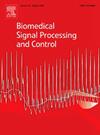BRMSA-Net: Disclosing concealed colorectal polyps in colonoscopy images via Boundary Recalibration and Multi-Scale Aggregation Network
IF 4.9
2区 医学
Q1 ENGINEERING, BIOMEDICAL
引用次数: 0
Abstract
For the early detection of colorectal cancer, automated polyp segmentation from colonoscopy images is very crucial. Polyps, often amorphous, exhibit a wide range of sizes and shapes. Furthermore, the boundaries separating polyps from the surrounding mucosal tissues are frequently not distinct. Consequently, segmenting polyps in practical settings is a particularly challenging task. In this study, we propose a Boundary Recalibration and Multi-Scale Aggregation Network (BRMSA-Net) for precise and consistent colon polyp segmentation. In particular, we first introduce the Multi-level Feature Aggregation (MFA) decoder to generate a global segmentation map by fusing high-level features for polyp localization. The MFA decoder incorporates the Criss-cross Feature Fusion (CFF) module, which effectively combines the cross-level features and addresses the issue of semantic gap across different levels. The segmentation map predicted by the MFA decoder is improved by the novel Incremental Boundary Refinement (IBR) module. The IBR module includes the Incremental Scale Fusion (ISF) module, which uses dilated convolutions to extract features with different receptive fields and strategically fuses them to reduce feature disparity. These features are then utilized by the Boundary Recalibration Cross-attention (BRC) module, which gradually refines the polyp boundaries by combining spatial and channel cross-attention. Extensive experiments on public polyp datasets show that BRMSA-Net outperforms several competing approaches in learning and generalization. It achieves 94.02% DSC and 89.46% IoU on CVC-ClinicDB, 92.26% DSC and 87.28% IoU on KvasirSEG, 82.45% DSC and 74.52% IoU on CVC-ColonDB, and 82.28% DSC and 73.81% IoU on ETIS-Larib. The code is available at: https://github.com/Meriem-Sebai/BRMSA-Net.
BRMSA-Net:通过边界重新校准和多尺度聚集网络发现结肠镜图像中隐藏的结肠直肠息肉
对于结直肠癌的早期发现,从结肠镜图像中自动分割息肉是至关重要的。息肉通常是无定形的,大小和形状各异。此外,息肉与周围粘膜组织的边界常常不明显。因此,分割息肉在实际设置是一个特别具有挑战性的任务。在这项研究中,我们提出了一种边界重新校准和多尺度聚集网络(BRMSA-Net),用于精确和一致的结肠息肉分割。特别是,我们首先引入了多层次特征聚合(MFA)解码器,通过融合高级特征来生成息肉定位的全局分割图。MFA解码器采用了交叉特征融合(CFF)模块,有效地结合了跨层特征,解决了不同层间的语义缺口问题。采用新的增量边界细化(IBR)模块对MFA解码器预测的分割图进行了改进。IBR模块包括增量尺度融合(ISF)模块,该模块使用扩展卷积提取不同接受域的特征并进行策略融合以减小特征差异。边界再校准交叉注意(BRC)模块利用这些特征,结合空间和通道交叉注意,逐步细化息肉边界。在公共息肉数据集上的大量实验表明,BRMSA-Net在学习和泛化方面优于几种竞争方法。CVC-ClinicDB的DSC为94.02%,IoU为89.46%,KvasirSEG的DSC为92.26%,IoU为87.28%,CVC-ColonDB的DSC为82.45%,IoU为74.52%,ETIS-Larib的DSC为82.28%,IoU为73.81%。代码可从https://github.com/Meriem-Sebai/BRMSA-Net获得。
本文章由计算机程序翻译,如有差异,请以英文原文为准。
求助全文
约1分钟内获得全文
求助全文
来源期刊

Biomedical Signal Processing and Control
工程技术-工程:生物医学
CiteScore
9.80
自引率
13.70%
发文量
822
审稿时长
4 months
期刊介绍:
Biomedical Signal Processing and Control aims to provide a cross-disciplinary international forum for the interchange of information on research in the measurement and analysis of signals and images in clinical medicine and the biological sciences. Emphasis is placed on contributions dealing with the practical, applications-led research on the use of methods and devices in clinical diagnosis, patient monitoring and management.
Biomedical Signal Processing and Control reflects the main areas in which these methods are being used and developed at the interface of both engineering and clinical science. The scope of the journal is defined to include relevant review papers, technical notes, short communications and letters. Tutorial papers and special issues will also be published.
 求助内容:
求助内容: 应助结果提醒方式:
应助结果提醒方式:


